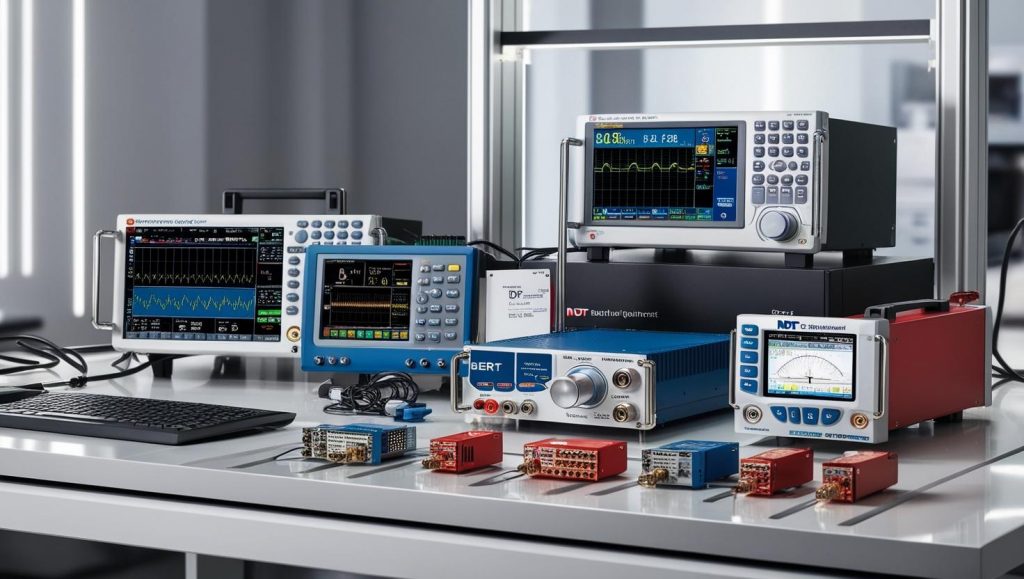The Test and Measurement Equipment industry—vital for ensuring quality, compliance, and innovation across sectors like electronics, telecommunications, aerospace, and automotive—found itself at the crossroads of global trade tensions during the Trump administration. The imposition of tariffs on imports from key manufacturing hubs, notably China, disrupted long-standing supply chains and led to increased production costs. However, as the industry adapts, a clearer path forward is emerging—one filled with both challenges and unique opportunities for growth and innovation.
Request US Tariff Impact on Test and Measurement Equipment Market @ https://www.marketsandmarkets.com/forms/ctaTariffImpact.asp?id=116452716
Trump Tariffs and Their Impact on the Test and Measurement Equipment industry
The Trump administration’s tariffs, particularly under Section 301 of the Trade Act, placed a substantial burden on test and measurement equipment imported from China. Tariffs as high as 25% affected a range of instruments—from oscilloscopes and signal analyzers to power meters and calibration devices. The immediate consequences included:
- Rising Costs for Manufacturers and End Users: Import-dependent companies faced margin pressures, passing on costs to consumers or absorbing losses.
- Delayed Procurement Cycles: Higher prices led to budget constraints, particularly in R&D departments, slowing down innovation and new project rollouts.
- Supply Chain Realignment: Companies began reevaluating their sourcing strategies, looking to diversify away from Chinese suppliers.
- Investment Uncertainty: The volatile policy environment made long-term planning difficult, with many companies pausing investments.
Key Takeaways
- Tariffs exposed critical vulnerabilities in global supply chains, highlighting over-reliance on single-source manufacturing.
- Short-term disruptions created long-term imperatives for supply chain resilience, regional diversification, and reshoring.
- Technology providers with flexible manufacturing footprints adapted faster and retained market share despite rising input costs.
- Regulatory and political risk became central to risk mitigation strategies across procurement and production.
Opportunities Emerging from the Disruption
While the Trump-era tariffs initially created headwinds for the Test and Measurement Equipment industry industry, they also ignited a wave of strategic transformation. The industry is now exploring new opportunities such as:
- Reshoring and Nearshoring
Manufacturers are increasingly relocating production to North America or neighboring regions to avoid future tariff shocks. This shift is creating investment opportunities in automation, robotics, and precision engineering in the U.S., Mexico, and Canada.
- Diversified Sourcing
Firms are building multi-country supply chains, incorporating partners in Vietnam, India, Malaysia, and Eastern Europe—ensuring supply continuity while maintaining competitive pricing.
- Innovation Acceleration
In response to tighter margins, companies are doubling down on innovation to differentiate their products. Modular instruments, wireless testing solutions, and AI-powered analysis tools are seeing accelerated development.
- Digital Transformation
The adoption of cloud-based platforms, digital twins, and remote testing solutions is rising. These tools allow companies to maintain productivity while minimizing physical dependencies and logistical hurdles.
- Strategic Partnerships and M&A
Smaller firms with niche capabilities are becoming acquisition targets for larger companies looking to build end-to-end solutions and enhance vertical integration.
Challenges That Remain
Despite these positive shifts, several structural and operational challenges linger:
- Rebuilding domestic capacity takes time—reshoring is capital intensive and constrained by skilled labor shortages.
- Component-level tariffs persist, affecting semiconductors, connectors, and microcontrollers used in test instruments.
- Uncertainty in U.S. trade policy remains a major concern for global operators planning long-term investments.
- Price competitiveness is still tilted in favor of lower-cost overseas manufacturers, making it harder for domestic players to match global pricing.
The test and measurement equipment industry, like many others, faced significant turbulence due to Trump-era tariffs. But this disruption has also been a catalyst for transformation—forcing companies to reevaluate operational models, supply chains, and innovation strategies.

